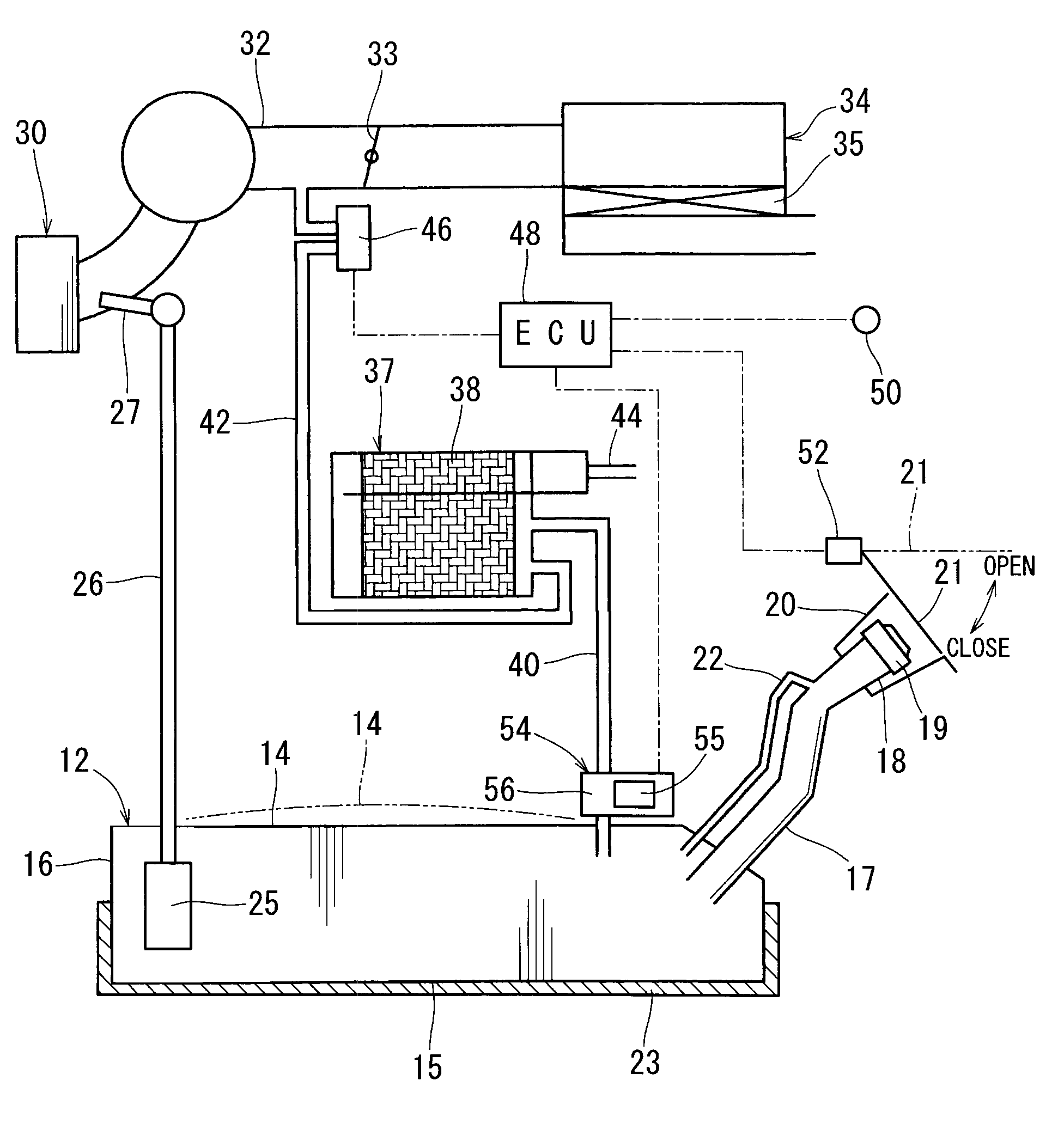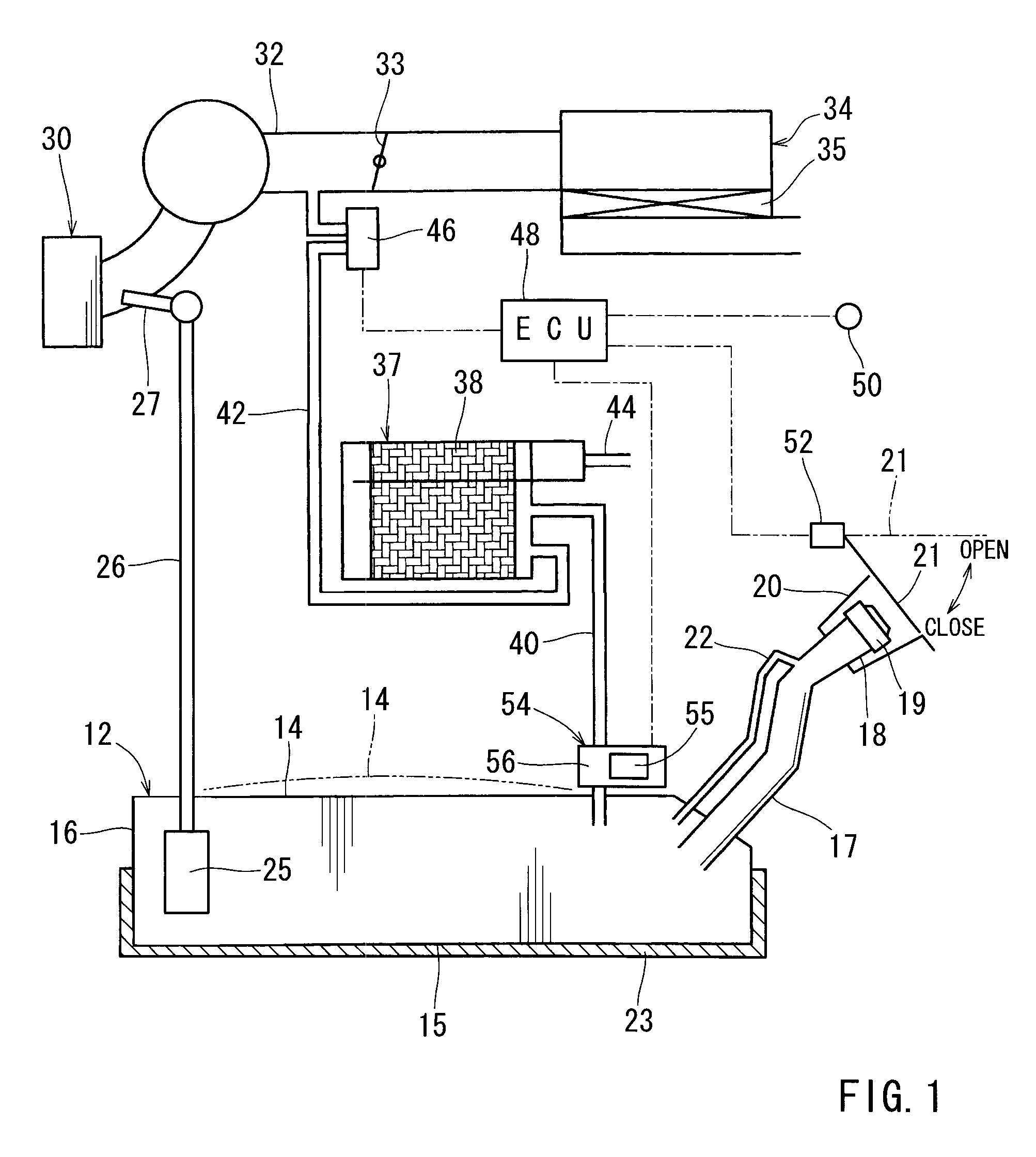Fuel vapor control devices
a technology of fuel vapor and control device, which is applied in the direction of electric control, combustion air/fuel air treatment, machines/engines, etc., can solve the problems of relative displacement and other problems, and achieve the effect of reducing the amount of fuel vapor to be fed to the canister, reducing the volume of the fuel tank, and simplifying the constitution of the devi
- Summary
- Abstract
- Description
- Claims
- Application Information
AI Technical Summary
Benefits of technology
Problems solved by technology
Method used
Image
Examples
embodiment 1
[0016]A first embodiment of the present invention will be explained below. This embodiment relates to a fuel vapor control device for a vehicle. FIG. 1 is a structural view showing the fuel vapor control device. As shown in FIG. 1, a fuel tank 12 for storing fuel (specifically, liquid fuel) has a hollow configuration and is installed on a vehicle, such as an automobile (not shown). The fuel tank 12 is, for instance, made of resin and has an upper wall portion 14, a bottom wall portion 15 and a peripheral wall portion 16. The upper wall portion 14, the bottom wall portion 15 and the peripheral wall portion 16 constitute “wall portions of the tank.”
[0017]The upper wall portion 14 of the fuel tank 12 can resiliently or flexurally deform, so that the upper wall portion 14 can expand upwardly in a curved manner by pressure inside the tank (see, two-dot chain line 14 in FIG. 1). Because of the resilient deformation of the upper wall portion 14, the volume of the tank 12 may be variable, i...
PUM
 Login to View More
Login to View More Abstract
Description
Claims
Application Information
 Login to View More
Login to View More - R&D
- Intellectual Property
- Life Sciences
- Materials
- Tech Scout
- Unparalleled Data Quality
- Higher Quality Content
- 60% Fewer Hallucinations
Browse by: Latest US Patents, China's latest patents, Technical Efficacy Thesaurus, Application Domain, Technology Topic, Popular Technical Reports.
© 2025 PatSnap. All rights reserved.Legal|Privacy policy|Modern Slavery Act Transparency Statement|Sitemap|About US| Contact US: help@patsnap.com


